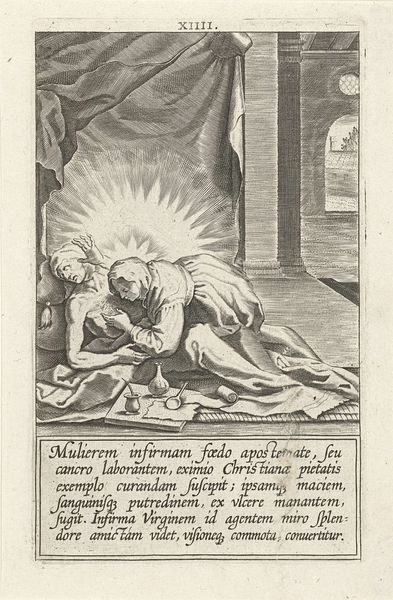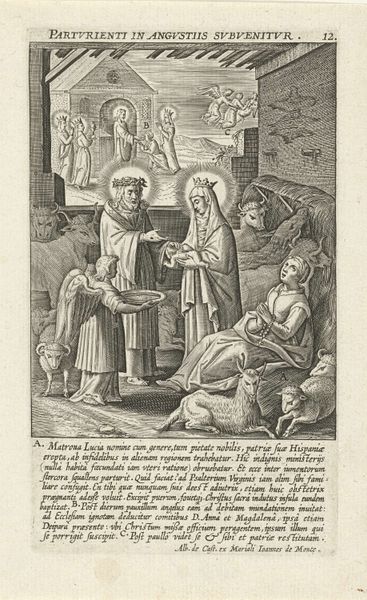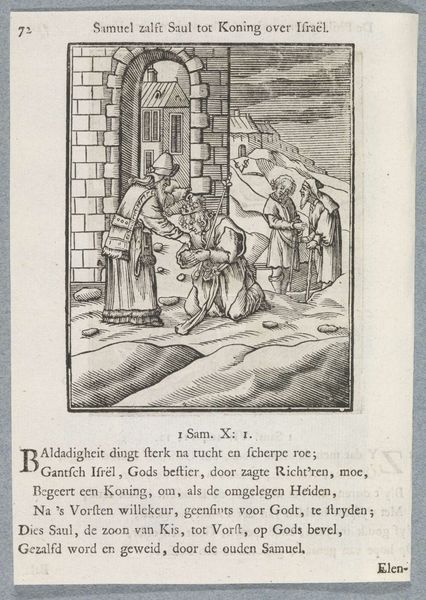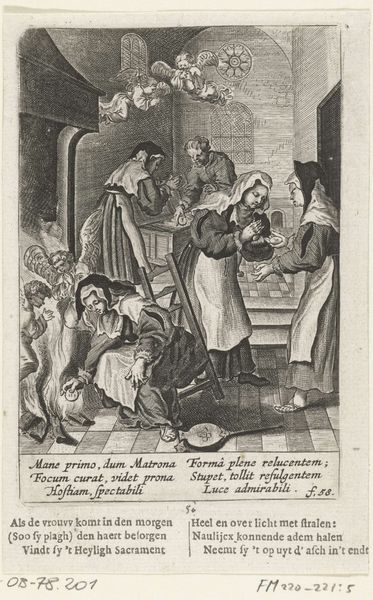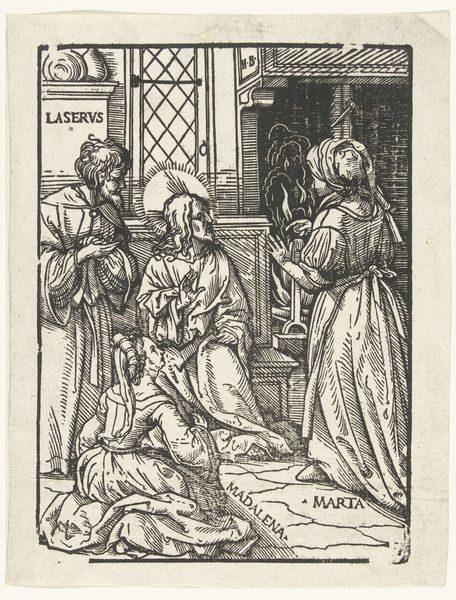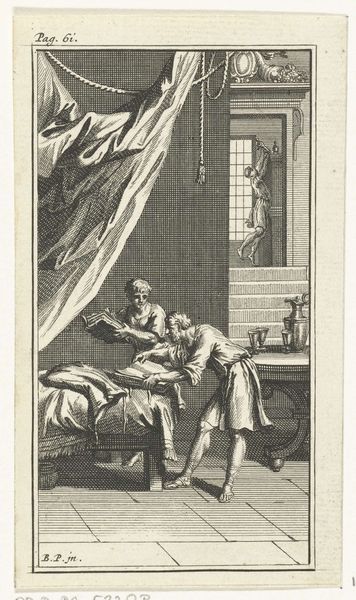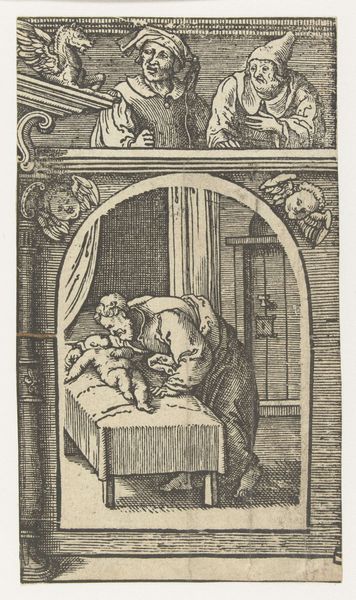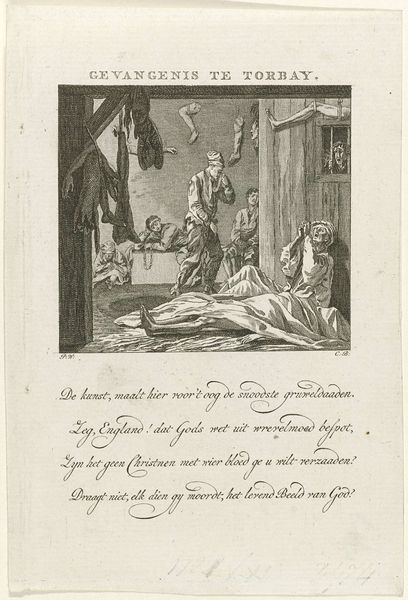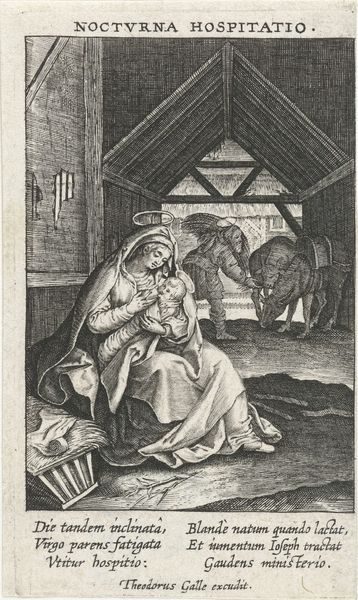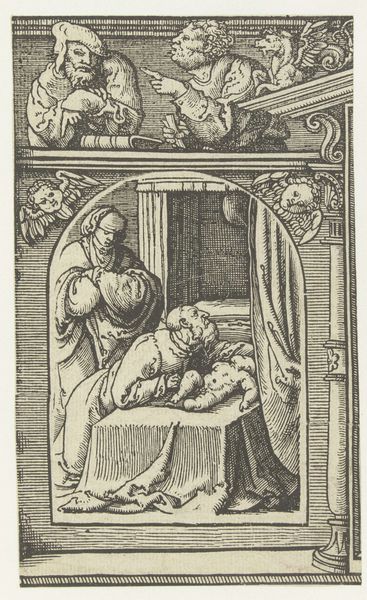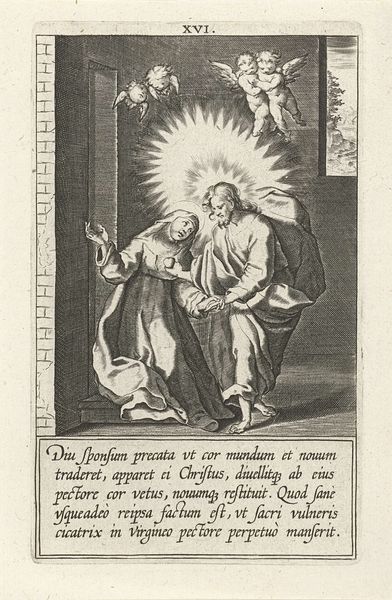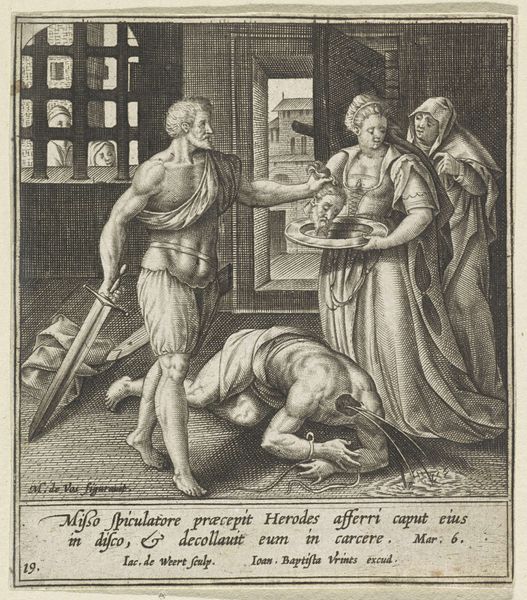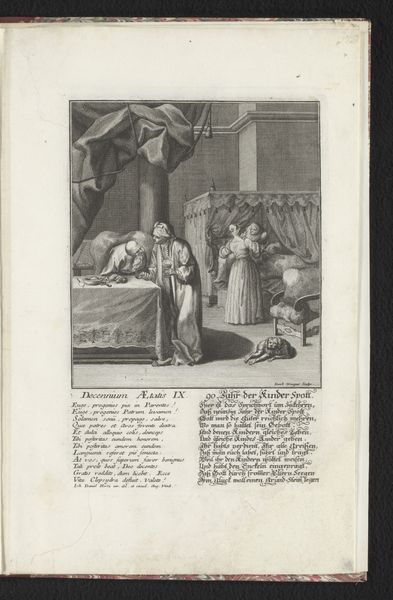
print, engraving
#
baroque
# print
#
old engraving style
#
figuration
#
line
#
history-painting
#
engraving
Dimensions: height 150 mm, width 90 mm
Copyright: Rijks Museum: Open Domain
Curator: Editor: This engraving, "Catharina in the tomb of Saint Agnes" by Cornelis Galle I, dating back to 1603, depicts what looks like a saint lying in state. It's striking how luminous the figure is against the somber setting. What social issues might have inspired such imagery? Curator: It's fascinating to consider this engraving not just as a religious scene, but as a commentary on the power dynamics of the time. Consider the role of women in the early 17th century. How does this portrayal of female sainthood challenge or reinforce societal expectations of women’s bodies at this historical juncture? Editor: So, beyond the obvious religious context, the artist might be using this image to subtly critique or support those gender roles? The saint seems powerful, but she is still confined to the tomb. Curator: Exactly. It invites questions about female agency and the limitations placed upon women, even within a religious framework. How are female experiences portrayed? Where does this intersect with issues of class, privilege, or lack thereof, and societal constraints of piety versus lived realities? Consider how the legend of female saints functions as an exemplum for society, then consider how women were actually living. What divergences emerge? Editor: I hadn’t thought about the social commentary within it. I was only focused on the religious aspect. Curator: Galle was producing these images within very specific historical and cultural contexts. Are his choices reinforcing dominant beliefs, or quietly challenging them through the visual narratives he creates? It requires us to examine who benefits from certain portrayals. Editor: That makes me think differently about the visual elements in this piece, and how artists could use those elements to question power structures. I learned to think critically about how gendered or class stereotypes of women have changed. Thanks! Curator: Wonderful. By thinking intersectionally, we gain a richer, more nuanced appreciation for works like this, appreciating it both in terms of the past and what it communicates to present and future generations.
Comments
No comments
Be the first to comment and join the conversation on the ultimate creative platform.
